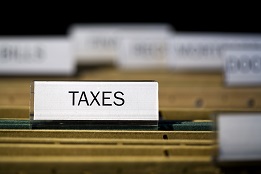Update on Alberta: Province is Reintroducing Indexation

Walter Harder
In 2019, the Alberta government paused the indexation of personal amounts and tax brackets. The effect of no indexation is an annual increase in taxes because wages tend to increase with inflation causing higher taxes to be levied on individuals. Here’s a look at the new brackets and rates:
|
|
Taxable Income Range
|
Ordinary
Income
|
Capital
Gains
|
Small Bus.
Corp. Div.
|
Eligible
Div.
|
|
AB
|
Up to $14,398
$14,399 to $19,814
$19,815 to $50,197
$50,198 to $100,392
$100,393 to $134,238
$134,239 to $155,625
$155,626 to $161,086
$161,086 to $214,781
$214,782 to $221,708
$221,709 to $322,171
Over $322,171
|
0%
15.00%
25.00%
30.50%
36.00%
38.00%
41.38%
42.38%
43.38%
47.00%
48.00%
|
0%
7.50%
12.50%
15.25%
18.00%
19.00%
20.69%
21.19%
21.69%
23.50%
24.00%
|
0%
6.87%
15.86%
22.18%
28.51%
30.81%
34.70%
35.85%
37.00%
41.16%
42.31%
|
0%
-0.03%
2.57%
10.16%
17.75%
20.51%
25.17%
26.55%
27.93%
32.93%
34.31%
|
Last month, the government of Alberta announced that it would reintroduce indexation or tax brackets and personal amounts, retroactive to January 1, 2022. While this is not expected to be reflected in payroll withholdings until next January, the result will be a larger refund for most Albertans due to excess withholding taxes.
Some Albertans will see an increase in take-home pay starting in January when the new personal amounts and brackets are integrated into the payroll systems. However, expected increases in CPP contributions and EI premiums will reduce or eliminate those increases.
Additional Educational Resources:
CONTINUING EDUCATION
- DAC2022 Register by September 30; November CE Summit Register by October 14
- Check out the course Make Sure It Is Deductible: How Business Income Is Taxed where you will find out more about how tax-efficient investing is a critical component of retirement income adequacy.
SPECIALIZED CREDENTIALS
Register by October 31 for our Tax Efficient Retirement Income Planning certificate course.
WORKPLACE TRAINING
Register by October 31 for our Tax Efficient Retirement Income Planning certificate course.
©Knowledge Bureau, Inc. All rights Reserved